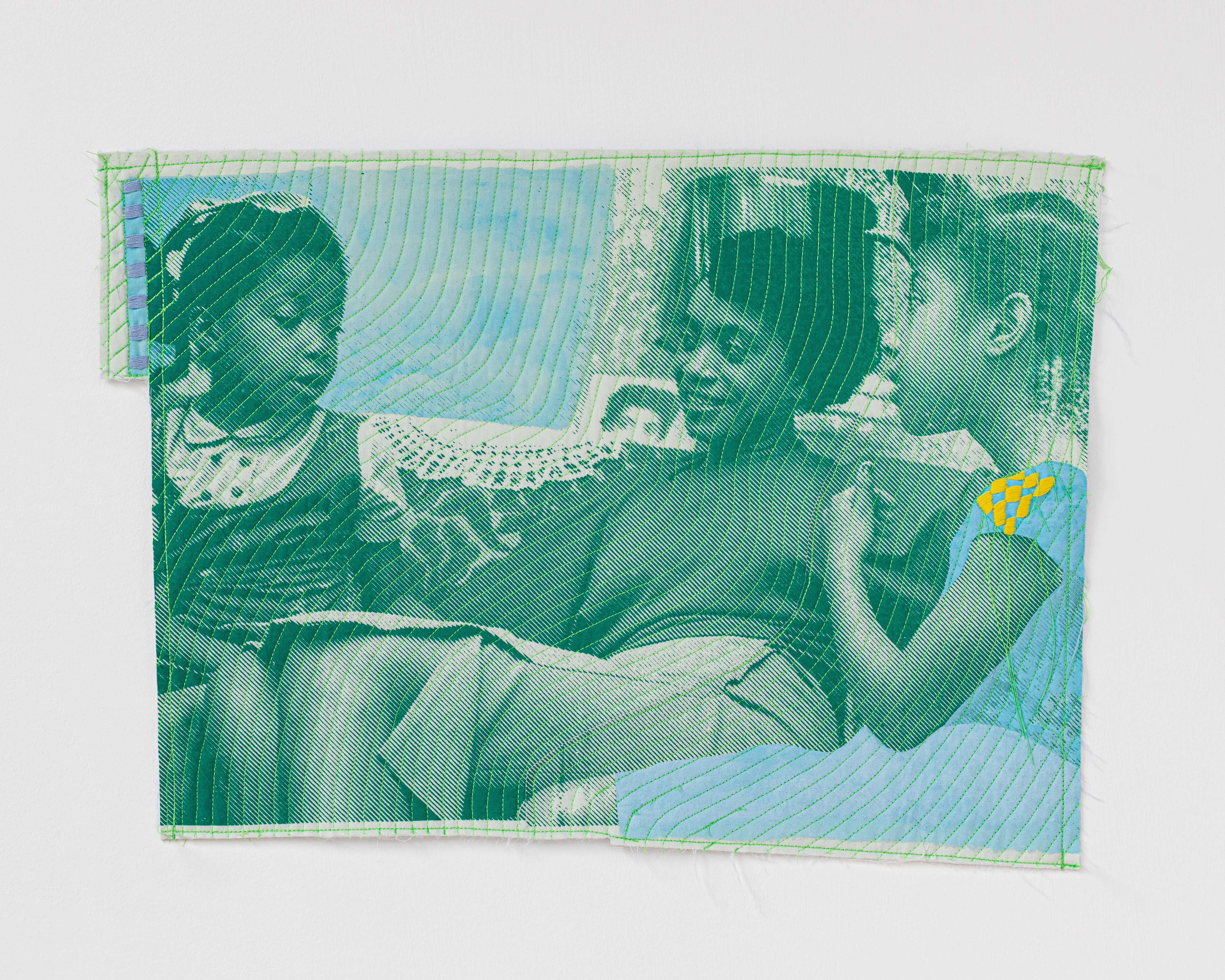
Stephanie Santana is a textile artist and printmaker whose works explore the interior worlds, mythologies, navigational tools, and resistance strategies of the African diaspora. Rooted in the responsive encounter with archival material while employing a range of printmaking, quilting and embroidery techniques, her practice centers an interest in uncovering useful information through the process of making. Earlier this month at TATTER, Stephanie gave a talk titled “Narrative Quilting: Textile as Record,” in which she discussed the history of quiltmaking as an important means of self-expression and documentation. She spoke about her artistic practice and use of archival material through this lens, while highlighting the work of quilting luminaries such as Faith Ringgold, Loretta Pettway Bennett, Rosie Lee Tompkins and Harriet Powers. On October 26th, she’ll return to teach an in-person class, “Embroidery as Mark-Making on Print,” where students will dive into the technical aspects of her work, adding embroidery to printed fabric as a collaboration between the embroiderer and printed subject. We recently sat down with her to discuss her talk and upcoming class. Read on to learn about Stephanie’s process and inspirations, and find more information about her class below.
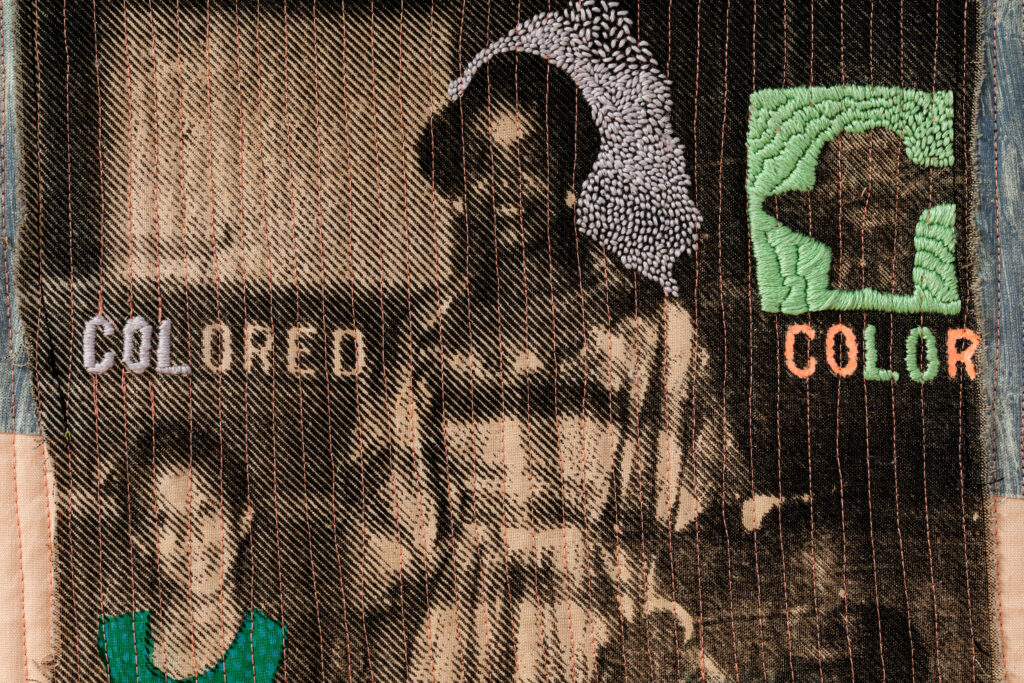
Tell us a little bit about your process as an artist.
I work across textiles and printmaking, so I typically begin with the printed image as a starting point. I’ve been working with the photographic archives of my great-aunt and grandfather, thinking about collective experiences and issues that I want to address, and then figuring out how to make that come through the images. I screen print pretty much all of my photographs, and then combine them with pieced fabric scraps and things that I’ve saved. I do view it as putting my hand into history and drawing on that lineage of black women, quilt makers, artists, folks that have told their stories through fabric and used it as a means of self expression, a way to record history. It feels like I’m collaborating with history and using it as a way to to learn more about my lineage through this embodiment of the practice.
Something that we talk about often at TATTER and in the textile world is the process of learning somebody’s story by hand. When did you learn to work with textiles?
My dad taught me how to hand sew when I was in elementary school. I remember when I was maybe in third or fourth grade I made a quilted pillowcase. I was always writing and illustrating stories when I was a kid. And then when I was in middle school I started trying to make my own clothes. I think there’s always been a part of me that’s trying to reclaim family history. My mom always tells the story about how she learned to make a pleated skirt in eighth grade and she just hated it. She never really sewed after that, even though her mom and her family members used to make dresses for her and her sister, but for my mom it was never something she wanted to do. I’ve tried to go back in and reclaim that in a different way. It’s something I’m choosing to do, not something I have to do.
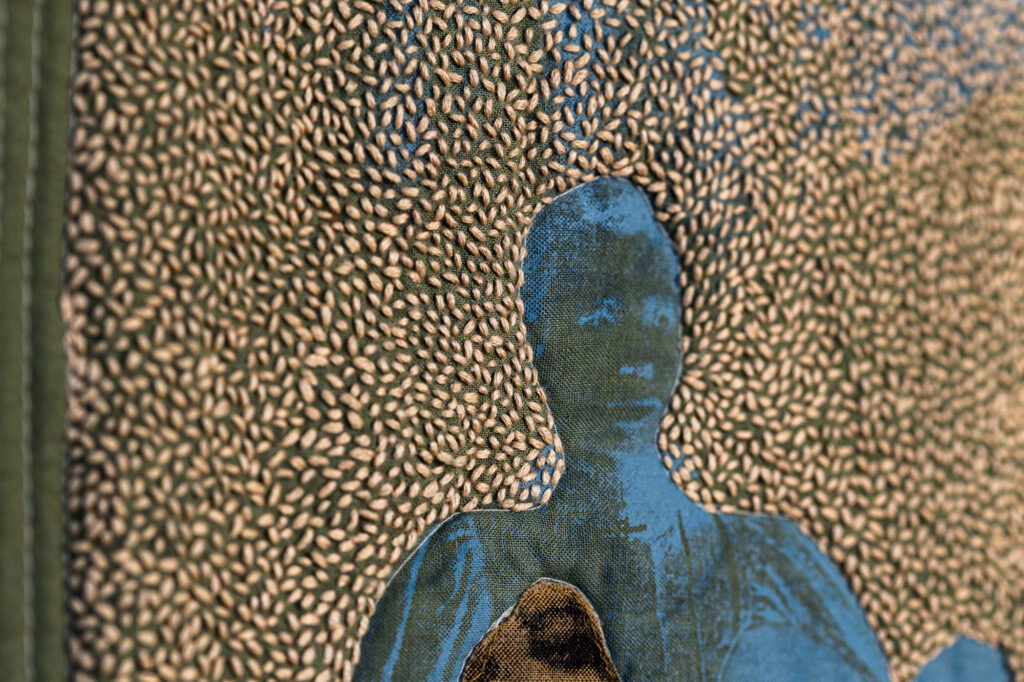
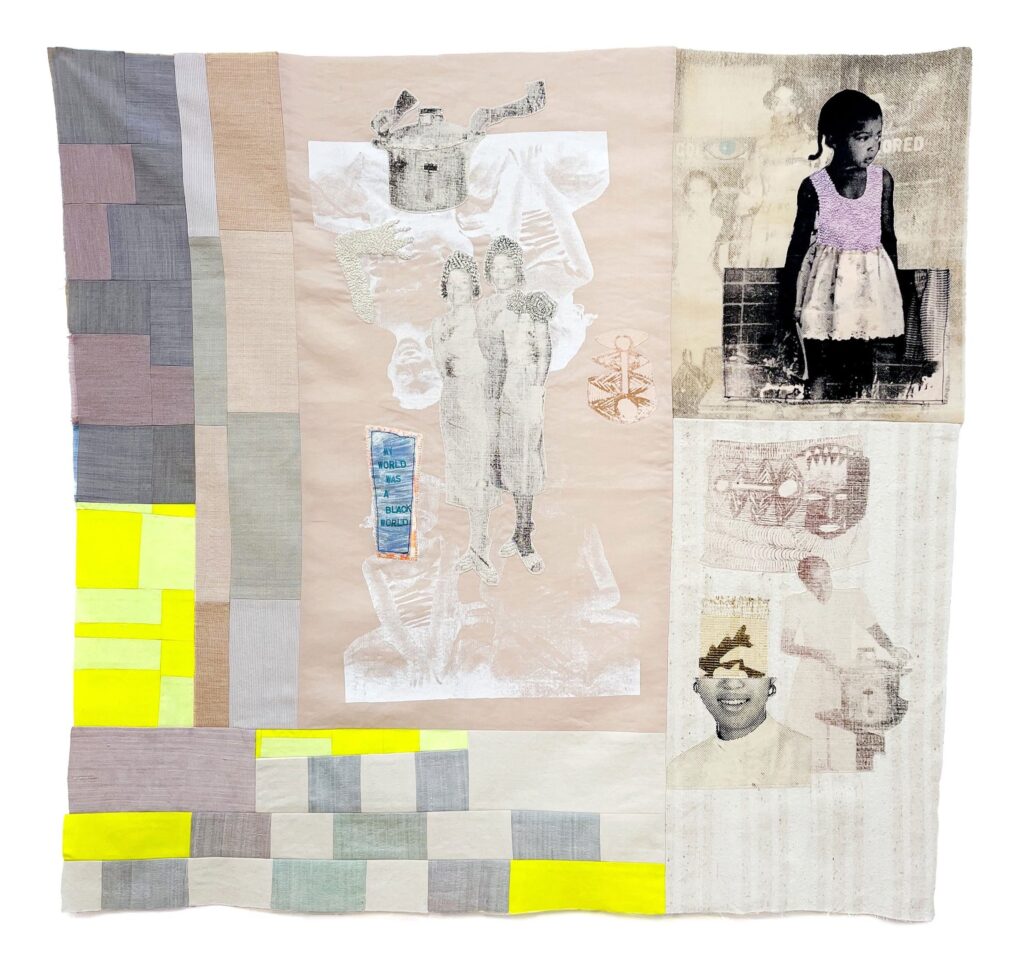
That’s another theme that comes up so often when talking with textile artists. There’s often a generation with a degree of resentment towards handwork, especially the labor of textiles. The resentment emanates from a time when it was a requisite part of household labor. We now live in an age where you don’t have to make your own clothes if you don’t want to. It can be hard to explain to older family members who may feel that resentment why you would choose to do it. How do you respond in your work to your mother’s feelings about textile work?
To speak more generally about it in my work, there’s certainly references to domestic labor that come up a lot. I made a print a couple of years ago that had a pressure cooker and these floating hands holding the pot. That expectation to perform domestic labor is something I feel in my own life, wrapped up in societal expectations and motherhood. I don’t know if I want to use the word resentment, but I do question that. It’s also me saying that I want to speak about those things and to use them to tell my stories. This is something that I enjoy doing, and I want to do it for my own means, my own purpose, and to use textiles in a different way.
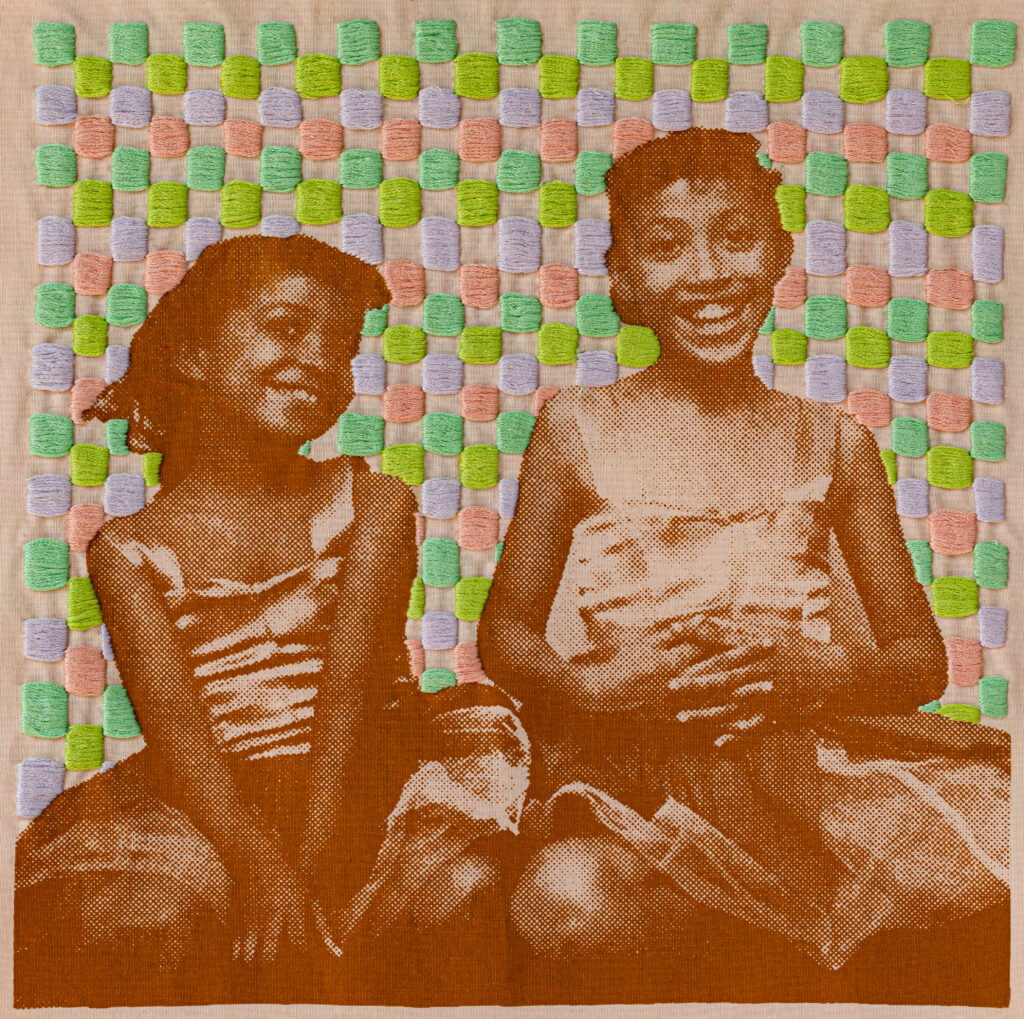
A lot of your prints have a great deal of heaviness and grief in them, but also a lot of joy and excitement, like that image of your mother and her sister. What is the process of your bringing those out in the prints through stitching? How do you plan to bring that to the workshop?
I think that a lot of the work is processing grief and dealing with the more challenging aspects of questioning like how those things are placed on us and trying to rewrite that narrative. But finding joy is also really important. I do really want to leave it open for folks, to kind of feel their way through it. It’s a very intuitive process where I’m looking for those open areas, or thinking about the meaning behind the photograph, or what I feel when I look at it. I want to show students the different stitches that they can use to add those marks. To ask how mark making functions in a piece and how you do it in a way that’s really unique to you.
I guess it just goes back to the feeling of respect I have for the way that textiles serve as a cultural record. They’re functional, but they also tell these personal stories. Faith Ringgold, in particular, is a huge inspiration for me. She was one of the first artists I encountered as a kid that showed me that you can make quilts, you can make dolls, you can write children’s books, she just did it all. She had said at one point that she started quilting because it was compatible with motherhood. Compatibility with motherhood is very much a real thing for me as well as compatible with living in New York City. I have a nine year old, I don’t always have a studio. I have to figure out how to work really small and then piece things together and it has to be something that if your child encounters it, it is not going to be harmful to the object or to the child. But there’s also an additional level of innovation that comes from just simply not having access to the kinds of tools you might ideally want to use. I feel like we always need ways of dreaming and imagining other realities.
